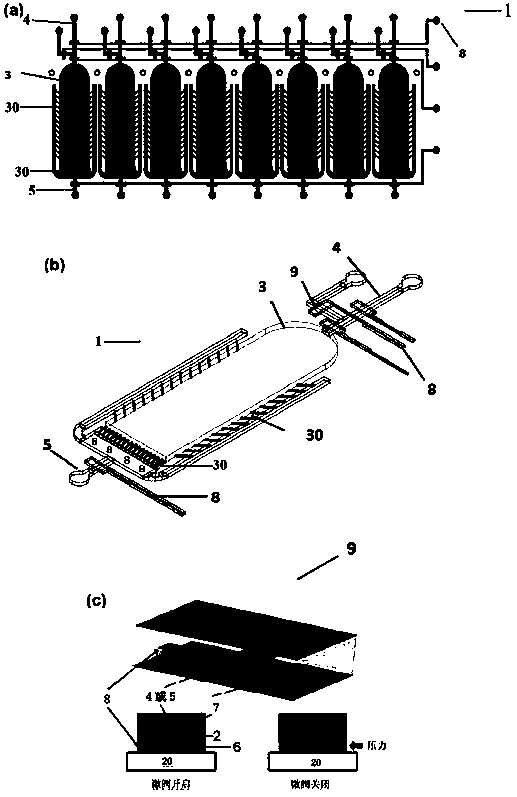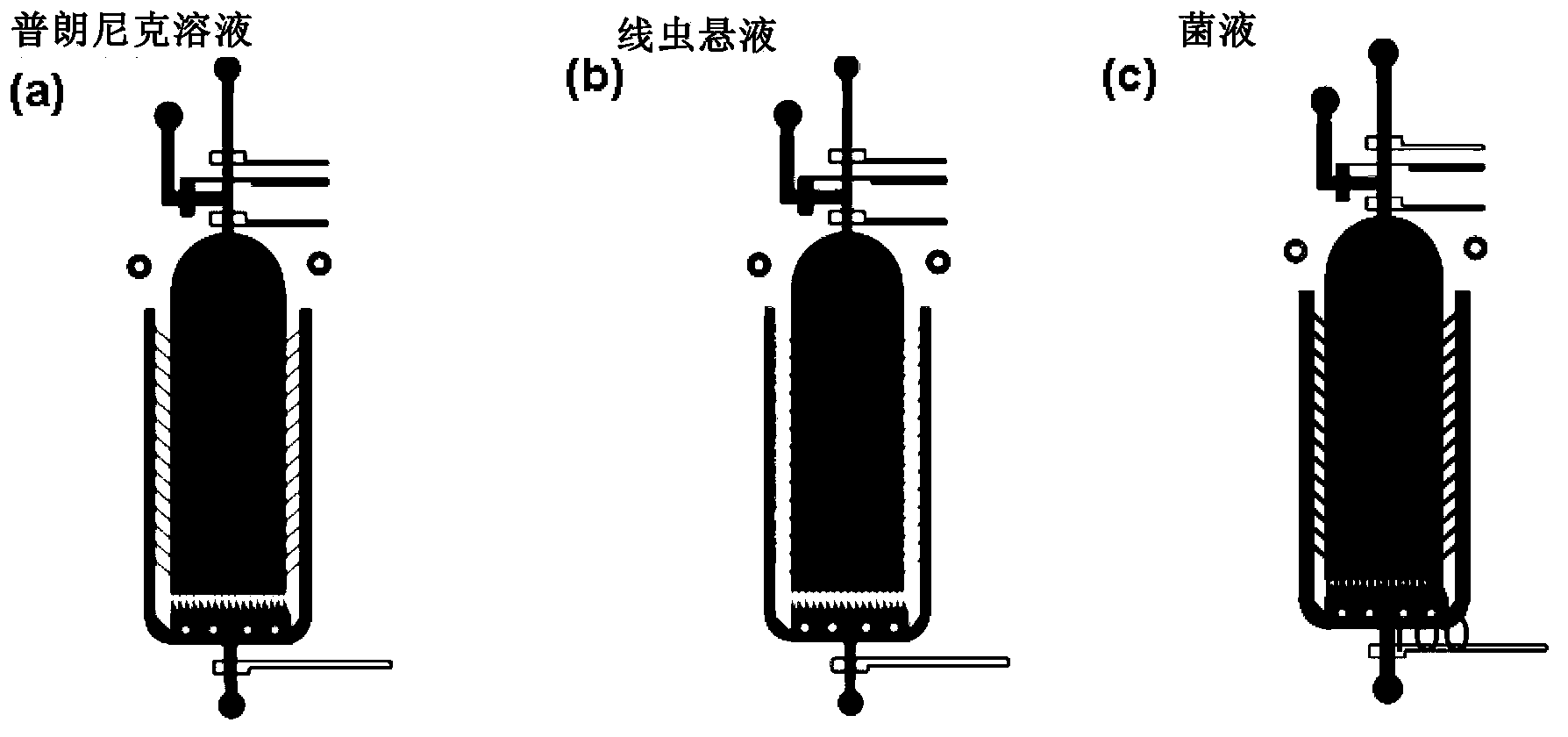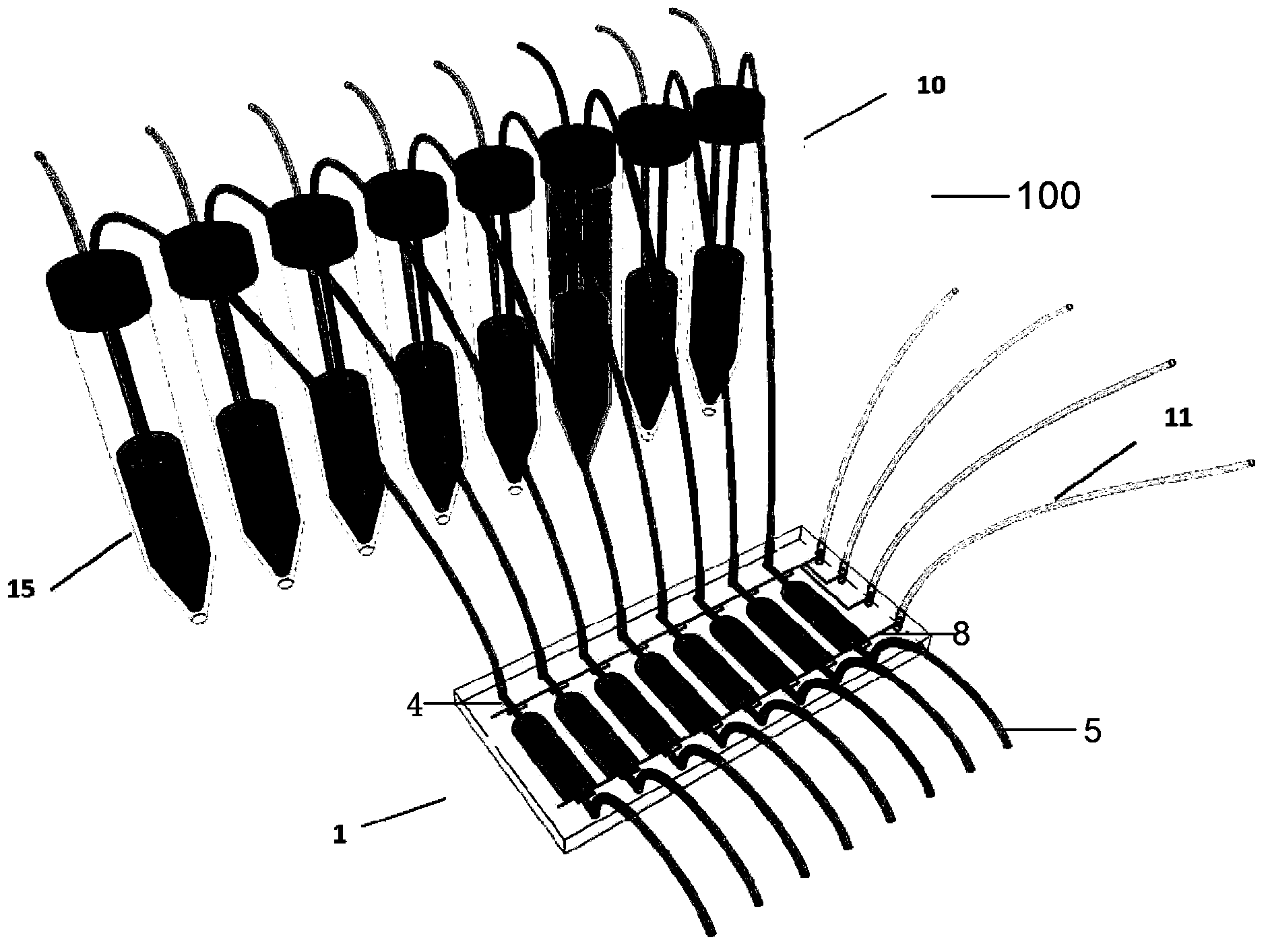Micro-fluidic chip and device for elegans cultivation and/or observation and application of micro-fluidic chip and device
A microfluidic chip and nematode technology, applied in the field of biotechnology and experimental equipment, can solve the problems of not being able to achieve cell or subcellular resolution, not being able to provide image data, and high cost of use
- Summary
- Abstract
- Description
- Claims
- Application Information
AI Technical Summary
Problems solved by technology
Method used
Image
Examples
Embodiment
[0111] Below in conjunction with specific embodiment, further illustrate the present invention. It should be understood that these examples are only used to illustrate the present invention and are not intended to limit the scope of the present invention. Those skilled in the art can make appropriate modifications and changes to the present invention, and these modifications and changes are all within the scope of the present invention. For example, the following examples illustrate the preparation method of microfluidic chips. In the examples, relatively simple photoresist SU-8, AZP 4620, AZ50XT and PDMS are used to prepare, but it does not mean that microfluidic chips can only be prepared by such methods. A skilled person can understand that any existing technology in the art can be used to prepare the microfluidic chip with the structure of the present invention.
[0112] For the experimental methods that do not indicate specific conditions in the following examples, conve...
preparation example 1
[0114] Preparation example 1. Adopt photolithography to make fluid layer pipeline (i.e. microfluidic pipeline) and control layer pipeline (i.e. control tube Tao) template
[0115] 1. Production of the control layer pipeline
[0116] The pipeline of the control layer is made of positive glue AZP 4620 (purchased from AZ Electronic Materials). Smoke the silicon wafer with hexamethyldisilane (HMDS) for 5 minutes, then pour positive resin AZP 4620 onto the silicon wafer modified by hexamethyldisilane, rotate at 1000rpm for 1 minute, and bake on a heating plate at 95°C Bake for 5 minutes, then bake on a 115°C heating plate for 10 minutes, and perform exposure and development according to conventional conditions.
[0117] 2. Fabrication of fluid layer pipelines
[0118] The production of the fluid layer pipeline is divided into three parts: the control part, the chamber part for cultivating nematodes, and the narrow pipeline for intercepting nematodes and flushing out eggs....
preparation example 2
[0127] Preparation Example 2. Fabrication of Microfluidic Chips and Devices
[0128] Experiments in Examples will be performed using a microfluidic chip and device having the following structures.
[0129] 1. Structure of the microfluidic chip
[0130] The structure of the microfluidic chip 1 is as follows: figure 1 Shown:
[0131] The nematode culture chamber 3 has a semicircular front (i.e. near the end of the input microfluidic pipeline) to prevent the food culture solution from being retained in a square dead corner. about).
[0132]There are 17 screening channels 30 with a width of 20 μm and a height of 10 μm at the rear of the culture chamber 3 (i.e., away from the end of the input microfluidic channel 4), which can prevent adult nematodes (about 90 μm in width) from passing through, but eggs and L1 to L3 (nematodes) The larval development stage is divided into four stages: L1, L2, L3 and L4, among which the length of L1 to L3 nematodes is 250-500 μm, and the wid...
PUM
 Login to View More
Login to View More Abstract
Description
Claims
Application Information
 Login to View More
Login to View More - R&D
- Intellectual Property
- Life Sciences
- Materials
- Tech Scout
- Unparalleled Data Quality
- Higher Quality Content
- 60% Fewer Hallucinations
Browse by: Latest US Patents, China's latest patents, Technical Efficacy Thesaurus, Application Domain, Technology Topic, Popular Technical Reports.
© 2025 PatSnap. All rights reserved.Legal|Privacy policy|Modern Slavery Act Transparency Statement|Sitemap|About US| Contact US: help@patsnap.com



